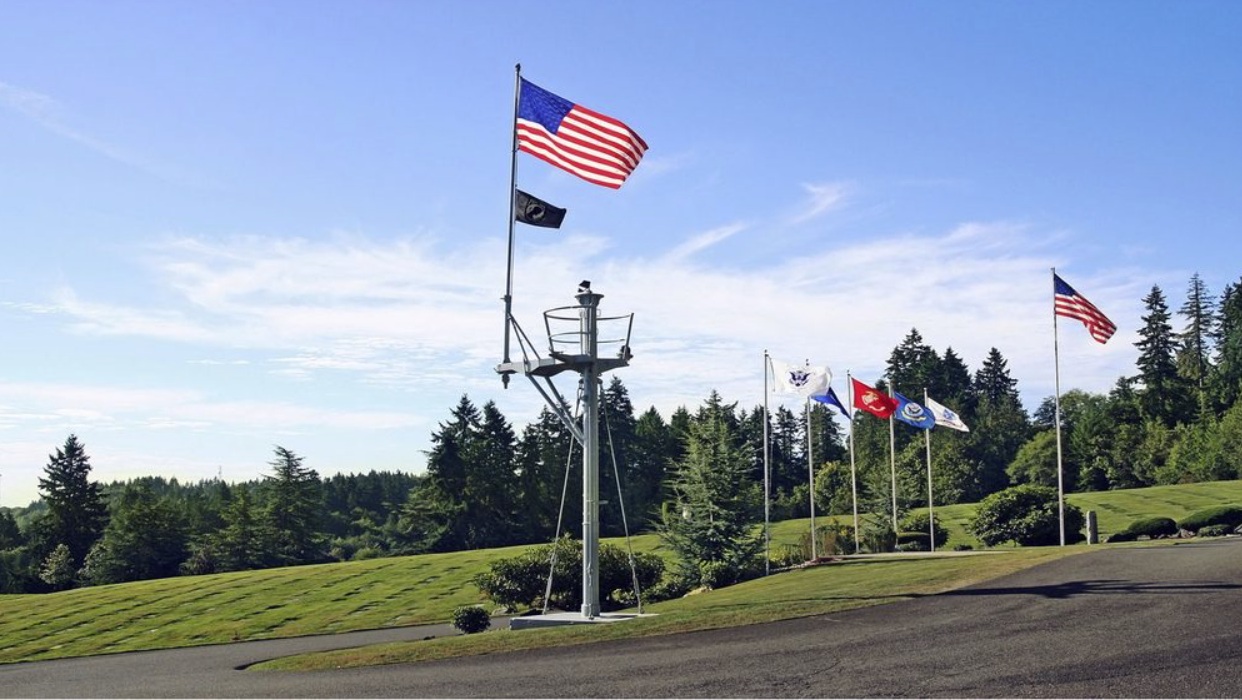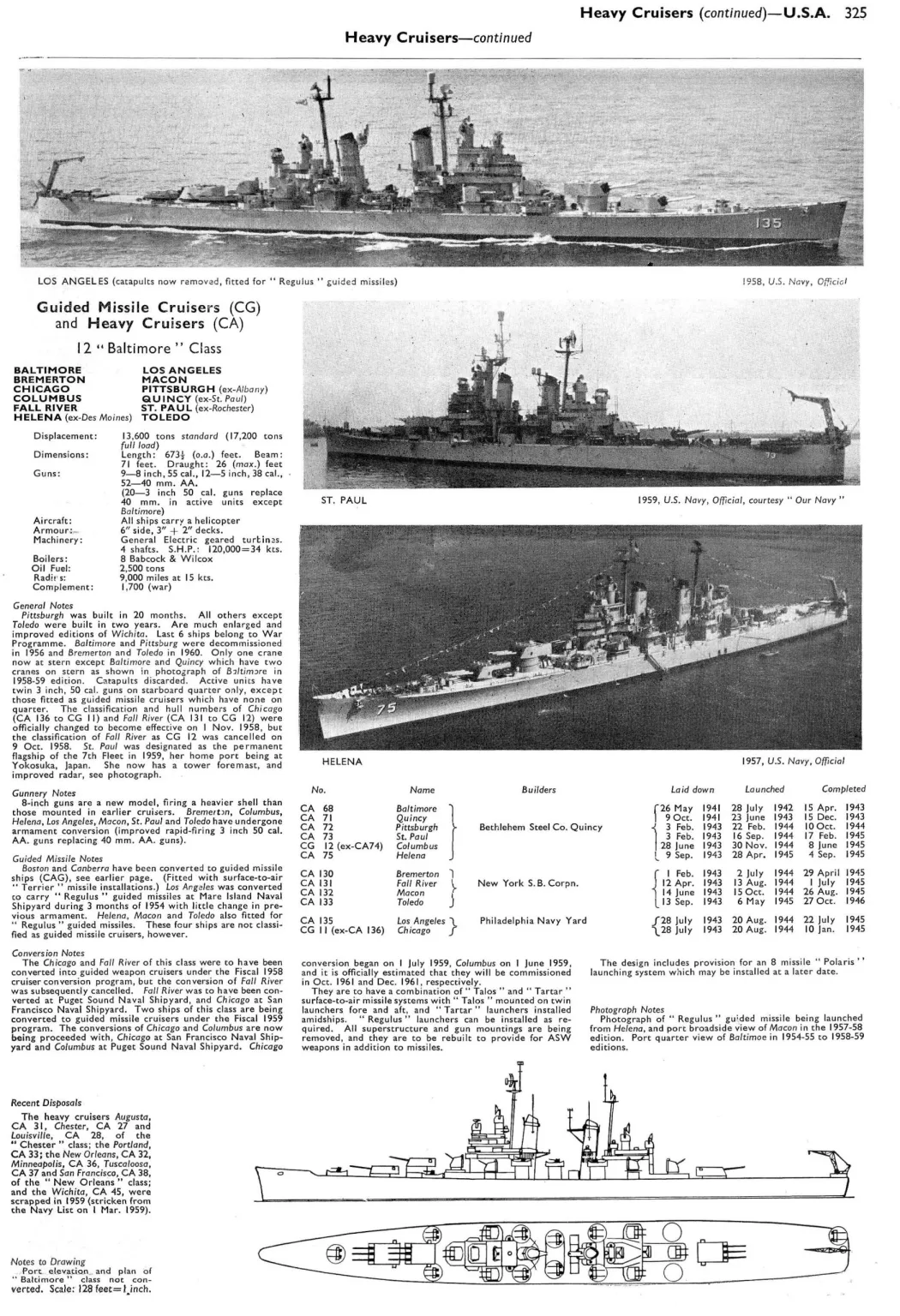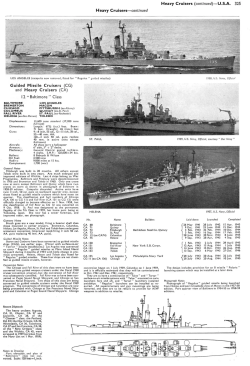The first warship named for the Washington city home to Puget Sound Navy Yard, which dates back to 1891. As explained by the Puget Sound Navy Museum, the Navy held a war bond competition in 1943 between the workers at Puget and those at California’s Mare Island NSY with the winner earning the naming rights to a new heavy cruiser whose keel had been laid on 1 February (as Yard No. 449) at New York Shipbuilding Corps. in Camden, New Jersey.
Puget won the competition– with the yard’s workers pledging an amazing 15 percent of their wages for six months– and earned the right to send a delegate to the East Coast to sponsor the vessel.

 laststandonzombieisland.com
laststandonzombieisland.com

USS Bremerton (CA-130) off Portland, Maine, 6 August 1945, just nine days before the Empire of Japan would signal that they were quitting the war.
The 24 envisioned heavy cruisers of Baltimore-class looked like an Iowa-class battleship in miniature with three triple turrets, twin stacks, a high central bridge, and two masts– and they were (almost) as powerful. Sheathed in a hefty 6 inches of armor belt (and 3 inches of deck armor), they could take a beating if they had to.
They were fast, capable of over 30 knots, which meant they could keep pace with the fast new battlewagons they looked so much like, as well as the new fleet carriers that were on the drawing board.

Puget won the competition– with the yard’s workers pledging an amazing 15 percent of their wages for six months– and earned the right to send a delegate to the East Coast to sponsor the vessel.

Warship Wednesday, April 30, 2025: Pride of Puget Sound
Here at LSOZI, we take off every Wednesday for a look at the old steam/diesel navies of the 1833-1954 period and will profile a different ship each week. These ships have a life, a tale all their o…
 laststandonzombieisland.com
laststandonzombieisland.com
USS Bremerton (CA-130) off Portland, Maine, 6 August 1945, just nine days before the Empire of Japan would signal that they were quitting the war.
The 24 envisioned heavy cruisers of Baltimore-class looked like an Iowa-class battleship in miniature with three triple turrets, twin stacks, a high central bridge, and two masts– and they were (almost) as powerful. Sheathed in a hefty 6 inches of armor belt (and 3 inches of deck armor), they could take a beating if they had to.
They were fast, capable of over 30 knots, which meant they could keep pace with the fast new battlewagons they looked so much like, as well as the new fleet carriers that were on the drawing board.

